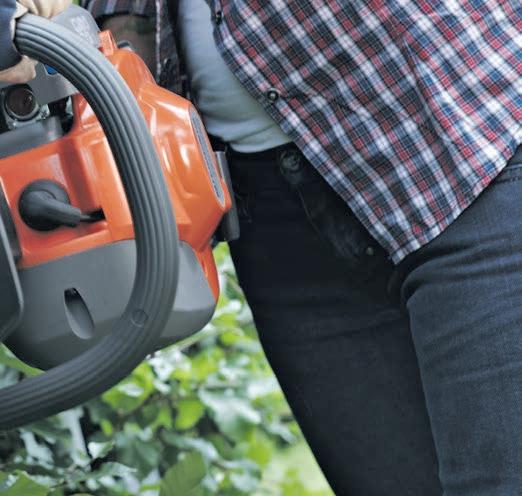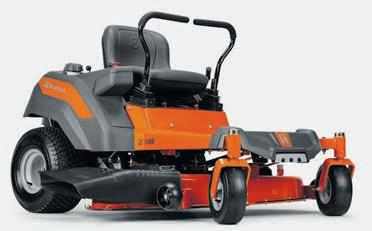




















Brody Runga grew up in Tūākau township with a truck driver dad originating from Māhia Peninsula, and his mum, who was from a local early settler family. He now lives in Whakatīwai on the Firth of Thames.


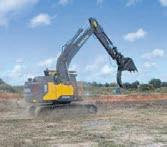
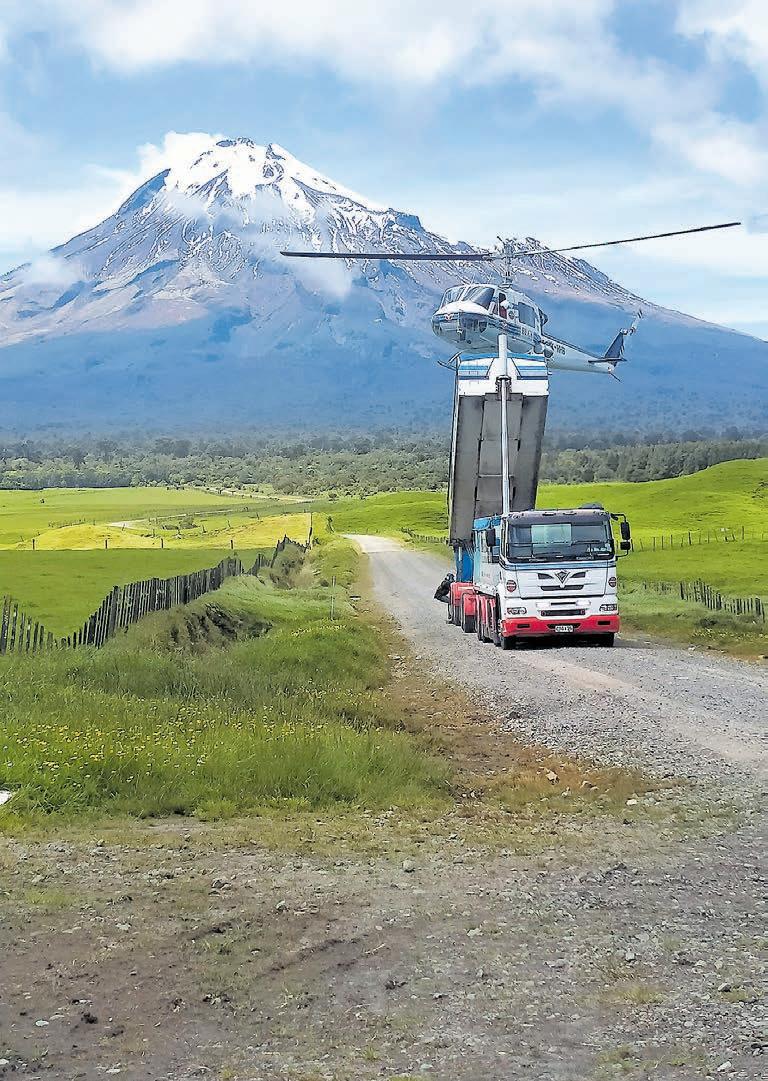





“Mum and dad had a mixed-race marriage, and my dad’s carving was my only cultural identity,” said Brody. “I enrolled in the Manukau School of Visual Arts and graduated with a level five diploma. I explored tā moko, the permanent marking or tattoo as traditionally practised by Māori, ceramics, charcoal and carving
with wood and decided carving was where my passion lies. 2020 was the best year of my life with the lockdowns as it allowed me to explore who I am as a carver. I now do commissions of objects like taiaha and 21st keys. It is a lifestyle choice for work-life balance, and I wouldn’t change it for anything.”
 by Ann van Engelen
by Ann van Engelen
David Ruan worked for a government agriculture department before moving to New Zealand from South China in 2003.

“I heard through colleagues that New Zealand was very good for vegetable production and a great place to live, so I decided to come with my family and see,” says David.
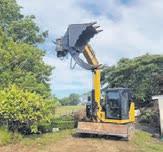
“I studied agriculture to grow rice and fruit in China. I completed an Ag Science degree and worked in management. When I moved to Auckland, I worked for growers in Kumeu and Karaka for five years and gained more knowledge. We have grown our own vegetables here for 15 years now, including zucchini, capsicum, carrots, beetroot and broccoli, cabbage, bok choy and Asian greens.”
The family take their Suncake Gardens produce to the Howick, Clevedon, Waikato and Claudelands farmers’ markets. “We have one more year to complete our BioGro Organic Standards certificate. We don’t like using sprays and chemicals on our food. To us, food is most important for
people’s health. My favourite vegetables are my greens such as silverbeet and bok choy.”


The Poschl family is known for their seedlings and produce at Mrs Greenjeans Seedlings and Ohaene Organics based in Thames. Korbinian and
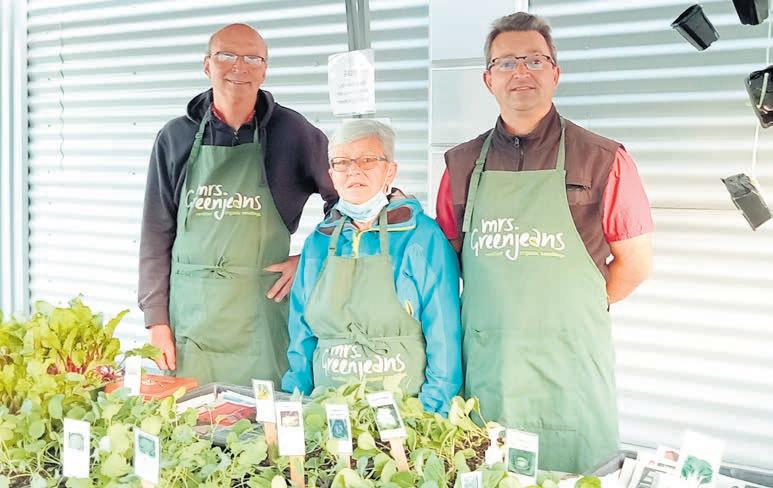


 by
by




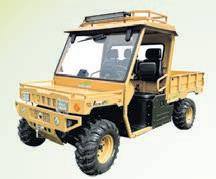


“My parents bought this five acres of land in 1996,” says Korbinian.







“To begin with, it was a lifestyle block, and over the last 10 years, we increased the number of fruit trees and started growing potatoes. In 2009 our friends, who are certified organic, offered us their established seedling business in Thames, and we said yes.
“We are certified organic with OrganicFarmNZ and use the BioGroNZ standards for our plants. We sell alongside other OrganicFarmNZ certified growers at the Hamilton Farmers’ Markets, such as Ongare Point Organics, with their bananas and avocado and Harvey Till, who is from Waihi.”
Chris just missed out on a first place to his brother-in-law Auckland young farmer Tim Dangen. “I grew up in Taranaki on a dairy farm and chose farming as my career,” said Chris.
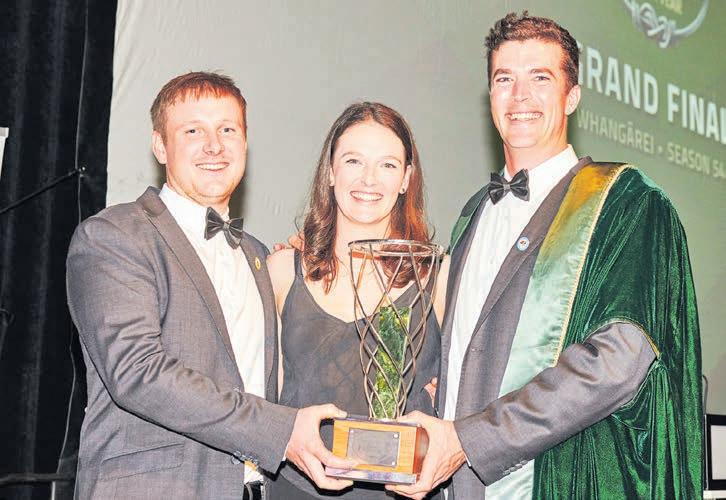









“I still remember when I was around three years old, helping mum and dad

get the cows in for milking when my siblings went off to school. We moved to Waikato when I was 10, and I reared calves through my primary school years to save money. After high school, I studied ag science at university and then came back to the home farm with my brother and parents.
10 Short Street, Matamata 188 Whitaker Street, Te Aroha Ph (07) 888 8333 | 0800 862 273 E info@funeralhome.co.nz www.funeralhome.co.nz

The world Covid pandemic and lockdowns during two years had adversely affected international wool harvesting with a global shortage of skilled woolshed labour.
As







a trans-Tasman initiative is underway to restaff the woolsheds. New Zealand company Elite Wool Industry Training signed a Memorandum of Understanding with two of Australia’s major players in the industry — wool grower-owned Australian Wool Innovation and Australia’s largest shearing and wool handling training organisation, SCAA Shearer Wool Handler Training.


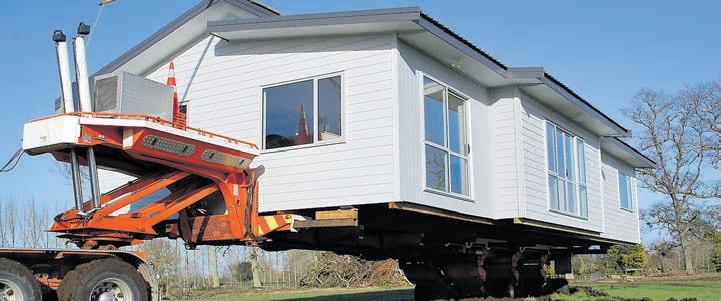
Elite chief executive, New Zealandbased Scotsman and former world champion shearer Tom Wilson said working with Australia will, in the first instance, allow coordination and management of staff across the two countries, better promote the industry as a career, and improve both the supply and quality of staff.

“I would love to own the farm one day and put my stamp on it for future generations,” says Andrew.
Andrew milks 320 cows for his parents, William and Fiona Macky, on their 98ha Ōhaupō farm. He was named the 2022 Waikato Dairy Manager of the Year at the recent New Zealand Dairy Industry Awards.

“I am currently in my fourth season dairy farming and love it. The genetic side of dairy farming is a massive interest of
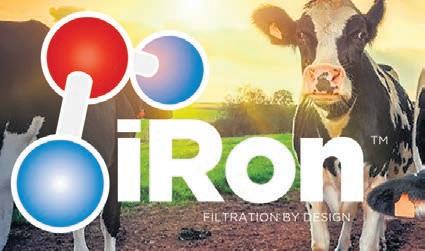


mine. I enjoy calving time and seeing the new heifer replacements and what the future milking herd is going to look like.”
Andrew is popular on social media with Instagram and his The Once A Day Farmer YouTube channel.
“I saw other dairy farmers around the world putting videos on YouTube, and no one was doing it here big time, so I gave it a go. I wanted to promote dairying because I believe we have one of the best systems in the world, being grass-based.”
 by Ann van Engelen
by Ann van Engelen
Zoe






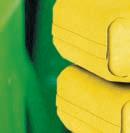 by Ann van Engelen
by Ann van Engelen
A team of Waikato Primary school students, the RD Sixers, took out the title of the AgriKidsNZ Grand Champions held in Whangārei alongside the FMG Junior Young Farmers of the Year.

“I was due to go home, and Covid hit, and now I have my partner Connor, and we are planning our future,” says Zoe.






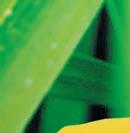


“My parents have a farm in Central Scotland, and I have always had an interest in cows. I decided to give the NZDIA a go and won Trainee of the Year


at the Central Plateau regionals. Farming in Scotland is very intensive compared to here because the cows are kept indoors most of the year due to the climate being very wet. My family milks three times a day as we are paid per litre rather than by milk solids.”
The contest for primary school-age children is based on challenges from the food and fibre sector, where they compete in teams of three. The RD Sixers, 12-yearolds Liam Hodgson from Pirongia School, Archie Keelty from St Patrick’s School and Leighton Barnett from St Columbus


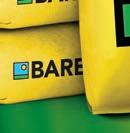


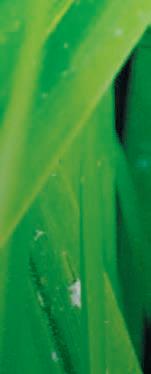
School, racked up the most points after a gruelling day of challenges.





“At first, we were pretty rough around the edges, but we got better over the day,” said Leighton. “It is just incredible to be given the honour to be able to be a part of this.”



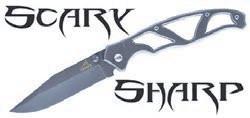 by Ann van Engelen
by Ann van Engelen
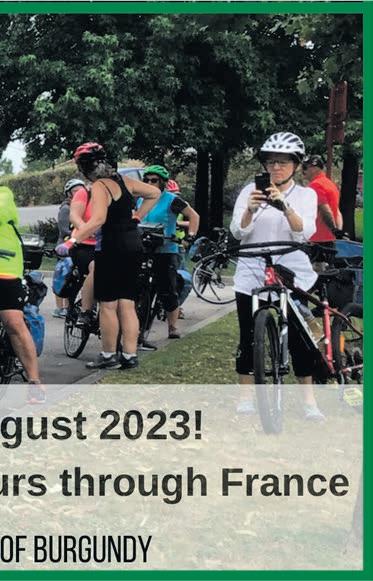

2010 managing pig farms. We also had Boer goats and used to show the bucks. I have had goats all my life. They were the first animals we brought when we moved here. They are like having a dog in a way and are very engaging, clever creatures — possibly a little clever for their own good, and I think they are addictive.”

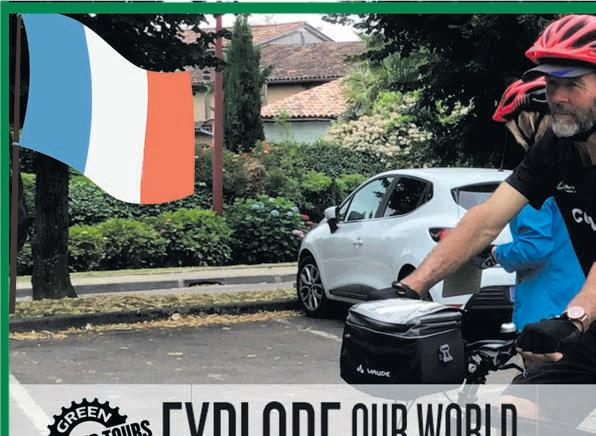 by Paul Campbell
by Paul Campbell
A Bay of Plenty truffle company Ohiwa Black Diamond Truffles, shared the secrets of the industry in a bid to get landowners growing ‘black diamonds’ across the country.

“The business is run by Ohiwa-based couple Matiu Hudson and Annette Munday. Our truffles are grown in our unique volcanic soils on oak and hazelnut trees. Our truffiere has been producing Black Perigord Truffles for over 18 years,” says Annette.

“We’ve already received orders for around 10,000 inoculated truffle seedlings from several hapū. We’d
like to see land trusts and farmers around New Zealand growing truffles on unproductive land. It’s an opportunity to make money out of land with poor soil, and could offer a side-line income for farmers if they planted seedlings beside trees used for riparian planting, for example. Truffles can fetch between $2,500 and $3,500 a kilogram.”

Grant and Heather Kane grow

nashi,
“We began growing nashi in 1983 when they first came out,” says Heather.


“Our brother-in-law had big orchards and was one of the founding growers in New Zealand. We lived in Tauranga at the time, and he offered Grant a full-time job if we bought land and started a nashi orchard here in Waikato. We decided to grow strawberries in 1993, and that keeps us busy. We started with 40,000 plants and went up to 125,000 plants, which is still a very small grower. We were selling
wholesale, and once the farmers’ markets started, we decided to downsize and sell at the Cambridge Farmers’ Market and Hamilton Farmers’ Market.

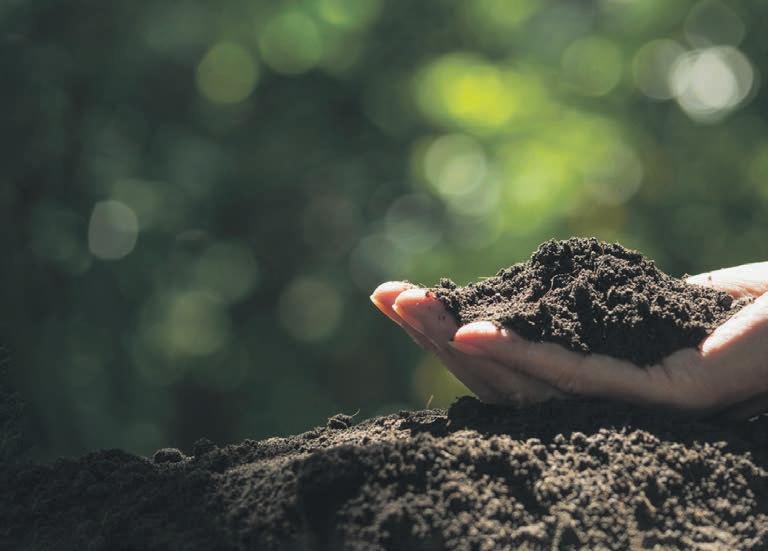
“We also go to a small produce market in Te Awamutu during the strawberry season. In summer, strawberries are best kept in the fridge. During our intense hot days, they break down very easily. Don’t wash them before putting them in the fridge either, because this breaks them down as well.
“My parents worked on a dairy farm in Ashburton, and the farming lifestyle ended up taking us all around the North Island,” says Sam.
“I went to college between Katikati and Tauranga Boys’ High School, did work experience on my mum’s husband’s farm and left school at 15 years old and did my first season between their farm and my dad’s farm.

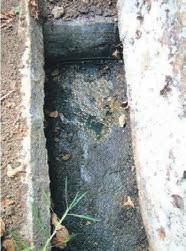
“It was an easy career choice for me as I had an easy start helping my



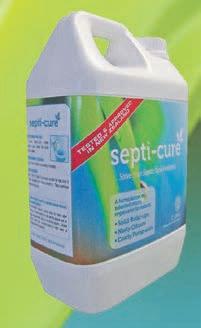






parents — I was relief milking from 11 years old. I settled down with my partner Samantha and landed my first dairy farming 2IC thanks to my previous on-farm experience. I landed here with Kevin and Gillian in the 2015–16 season as 2IC.
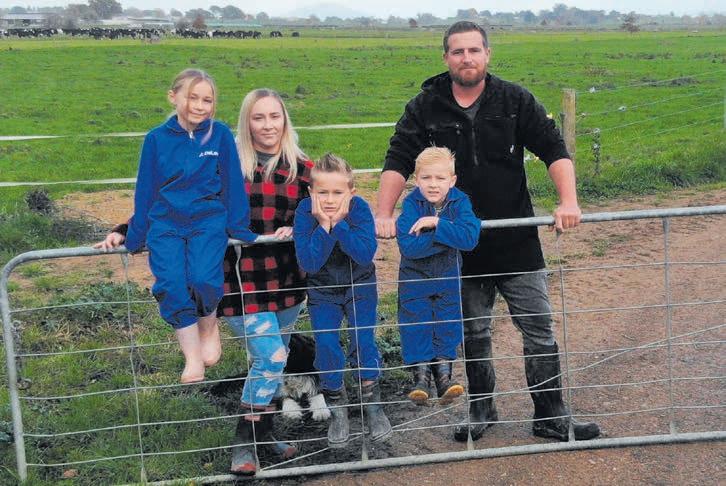
“Moving my way up the ladder has given me a great sense of success, and now I can hand my knowledge down to others and give staff members the chance to work their way up the ladder.”




 by Ann van Engelen
by Ann van Engelen




Malena Bradley told us how when she and her husband Simon purchased their small property in Taumarunui, she never realised she would develop a passion for gardening and create a garden of national significance.

“I got my first donkey three months after we got married,” says Marion.
“Peter came to New Zealand from Holland with his family by boat in 1958, and I came with my family from Holland


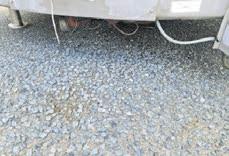

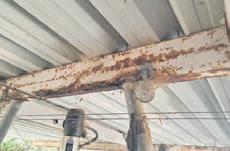




Peter and Marion often take their miniature donkeys to rest homes to interact with the elderly 10 years later. We met through the Dutch Society annual ball. Once our children grew up and left home, we retired and got more donkeys to breed, and our stud became very well known both here and in Australia.
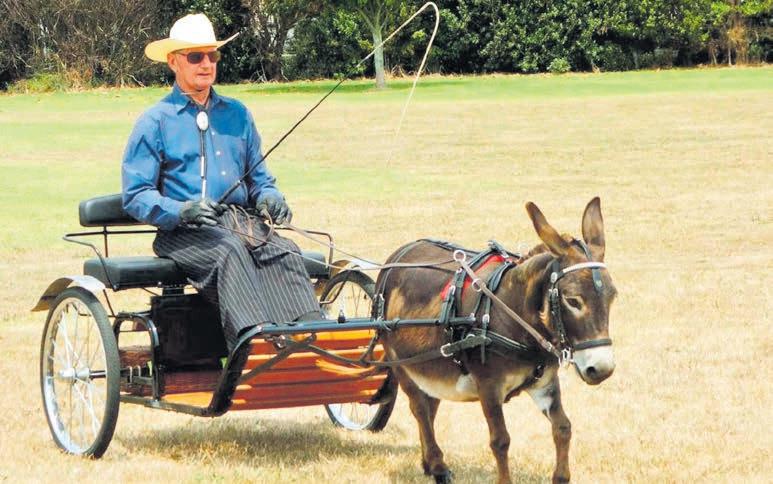
“Showing miniature donkeys is like showing sheep, cattle and ponies. Elderly people love them, and we do rest home visits. We couldn’t imagine life without our little treasures.”
“I grew up in Hamilton and did my high school years in Sydney before completing nursing training,” says Malena.
“Simon is a stock agent and grew up on a farm in Piopio. In 1998, we bought a two-and-a-half acre block, and the garden project began with the initial planting
taking up a paddock below the family home. Our children were little at the time, and I had no idea about gardening until Simon and I went to a garden festival in Taranaki. We were blown away by what we saw, and it inspired us with what we could try to accomplish on our land.”

“With summer now here, we would love to see people, including farmers, come and take a scenic ight and enjoy the views from above. They may nd they would be interested in learning to y too,” says training manager Kelsey McInnes.
“At present, we have a starter pack of the rst ve ights with a log book and membership to the aero club for $1,499.00. Students log the rst lessons in the book that counts toward their licence rather than going for just one ight.

“It is a great start for people to get a taste, and people can put in together to buy it as a gift for a loved one, especially if someone has chatted about ying — it is a way to not overcommit.”
Founded in 1933, Waikato Aviation (Waikato Aero Club) continues to provide air charter and ight training services, holding a front-row position at Hamilton International Airport.

“From aspiring pilots to those with a desire to explore the region’s skies with friends, family and for business, we have a heritage built on the pioneering spirit of our founders. We have a reputation for safety, reliability and service, with a vast range of opportunities for people to y in a light aircraft with our experienced pilots.
“I grew up on a dairy farm myself, and my dad hardly ever leaves the property, but I encourage farmers to take a break and get up in the air on a scenic ight and view your land. It is a different perspective from above, and see your pasture, crops and stock from the air.
“I know a lot of farmers need a reason to take a day out, and if you y, you
take the controls as well, giving you the opportunity to consider taking ying lessons yourself. It gives people a real thrill, especially over the summer period.
“Post-Covid, the ying industry is ramping up again, and it is a nice time for people looking for a career change to consider aviation as an option. We cater for a variety of needs and requests,
and all the options we have are on the website.
“Flights make great gifts. The experience beats a pair of socks or jocks, so keep an eye on waikatoaviation.co.nz, or keep up to date on our Facebook and Instagram pages. We have a cafe on site as well, and if you ask me, a ight and then a coffee always works.”
“I am a third-generation cowboy,” says Rodney. “The Limmer family is a well-known name in the New Zealand rodeo circuit. I am a member of the Waikato Rodeo Association and have cousins and uncles riding. The girls in the family have their parts as well, and my two younger brothers help out with

handling the horses and other chores. My grandfather Brian had a string of horses, and my father Lance was in the rodeo and then became a pick-up rider. Barrel racing is fun, and young people like to learn from the older experienced competitors so they can continue with the sport.”
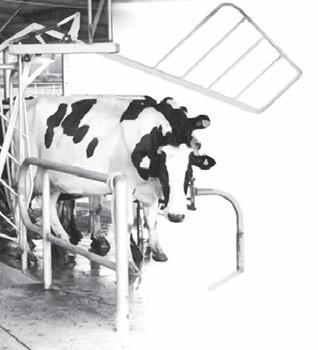

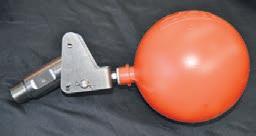

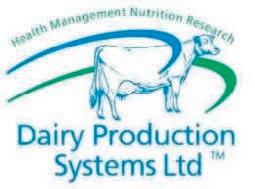
 by Paul Campbell
by Paul Campbell
Wools of New Zealand, 100 per cent owned by the farming families who grow the wool, have stepped up with a three-year sponsorship of national sports organisation Shearing Sports New Zealand, which helped make household names out of champion shearers.

Chairman of Shearing Sports New Zealand since soon after ending his 34 years of top-class competition in 2015, Sir David Fagan announced the sponsorship, saying it sets a platform for more success at next year’s world championships in Scotland and the future.
A team of six shearers to go to Scotland will be named after some
particularly tough competition during the Kiwi summer. Comprising two machine shearers from the Golden Shears and New Zealand Shears Open championship finals, two wool handlers from a selection series of eight shows throughout the country and two blades shearers will emerge from an eight-round series in the South Island.
Then a bridge was built, and over the course of some 80 years, two growing towns became one. It all came about long after Cambridge grew from a war footing to a market town which at one stage could have matched Hamilton. In 1864, British soldiers and colonial militia were in conflict with Waikato Māori, who were fighting against attempts to force them into selling their lands.
The troops were being supplied by river boats, and a base was formed on the banks where a camp was then set up to be followed by a garrison fort and military base where more than 800 soldiers were stationed. It became Camp Cambridge, named after a minor royal in Britain, the Duke of Cambridge, who was a cousin of Queen Victoria and also the head of the British Army. It was perhaps a clever step on the military promotion ladder for the local man in charge.
When hostilities ended, Cambridge became a market town run by a local board of trustees, and became a recognised town in 1888, when it could have matched Hamilton as the Waikato’s main centre.
Across the river, the smaller settlement of Leamington was joined to Cambridge by the bridge built in 1871, where it was
given an independent town status in 1905. It was more than 50 years before the joined-up communities decided to become one, and Leamington became part of the Borough of Cambridge in 1958.
Reminders today of the upbringing of Cambridge are in landmark buildings,
including St Andrew’s Anglican Church (1881) and the Cambridge Primary School (1879), built while it was a military settlement.
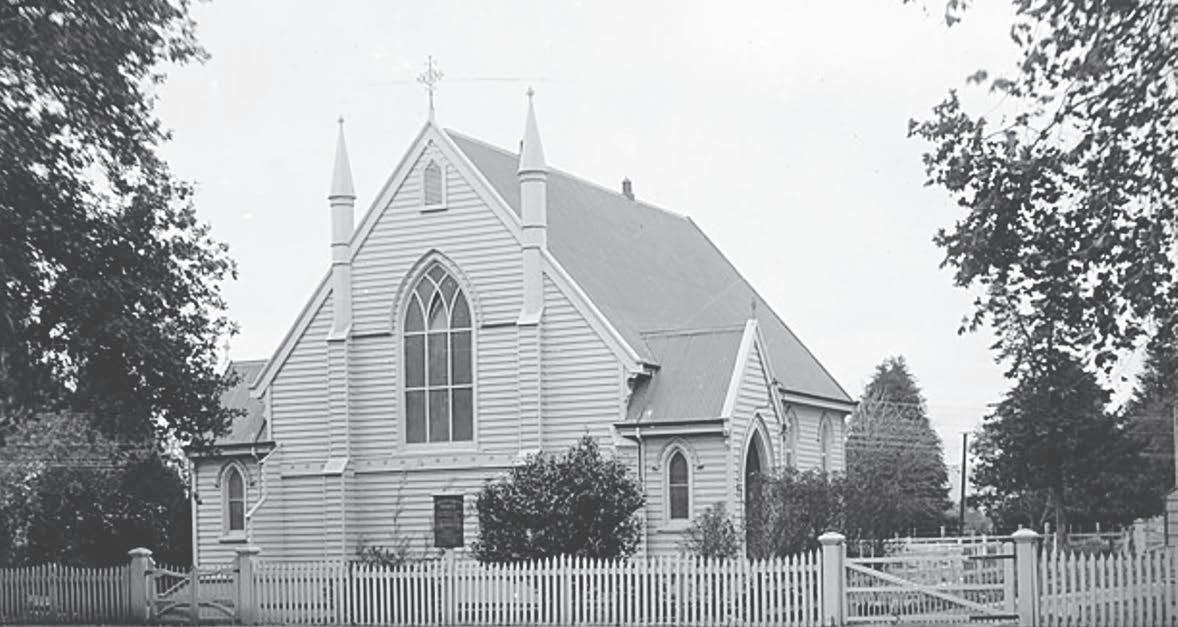
Today, dairying, sheep raising, cattle fattening and other agricultural endeavours keep the town busy. as a servicing and



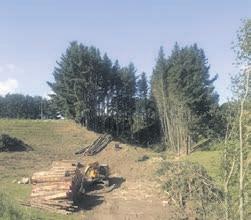




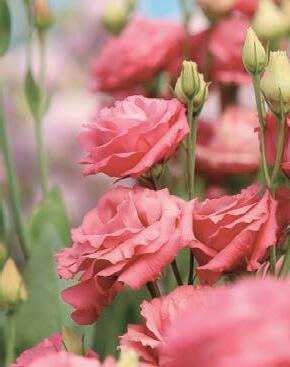

distributing centre. Among its industrial activities are the production of cheese, sawmilling, general engineering and the manufacture of concrete products. Thoroughbred horse racing and highperformance sport have led to the town’s unofficial title of ‘Home of Champions’.





 by Paul Campbell
by Paul Campbell
traders, missionaries, government officials, travellers and explorers passed through the Matamata Plains on their journeys, including familiar names in New Zealand history like William Colenso, Ferdinand Hochstetter, Bishop Pompallier, Bishop Selwyn and John Kinder.
Then, in 1833, missionaries came to the Matamata Pa to preach the first Christian sermon, and two years later, the Reverend Alfred Brown and his wife Charlotte set up a mission station. Then they had to leave as unrest broke out in the Waikato and developed into warfare. These developed into the Land Wars and hostilities took place between colonial government forces and Māori, lasting from July 1863 to April 1864.
In 1865, Josiah Clifton Firth, an Auckland flour miller and entrepreneur, negotiated for the lease of 22,600
hectares of land, including the future site of the town of Matamata. He adopted the name of Matamata for his large estate and hoped to grow wheat for his Auckland flour mill, but the climate proved unsuitable, and he had to turn to cattle, sheep and crops.


















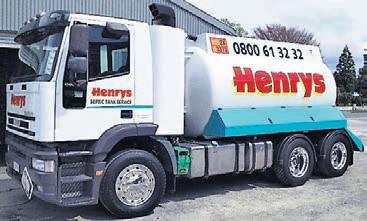








rich plains beyond
In 1885 the Thames Valley and Rotorua Railway Company built tracks from Morrinsville to Matamata, and the choice of a railway station in the middle of the plain began the development of the future town. In 1887 the Matamata Estate was taken over by the Loan and Mercantile Company and then by the Bank of New Zealand. In 1904 it was subdivided into 118 farms, which were offered for ballot to farming applicants.
The township of Matamata, which was still a tiny settlement, was surveyed into town sections with provision for wide

streets and a recreational area at the central domain. The surveyors enclosed the new settlement on two sides with a 40-metre-wide plantation reserve, which over the years has developed into the Matamata Centennial Drive, now a botanical park with a wide variety of trees.
Since those early days, Matamata has grown into a vibrant tree-lined rural servicing town providing for the needs of the town and its rural hinterland and as a lifestyle to those choosing to work in nearby Hamilton.
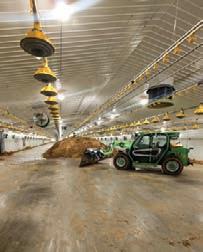





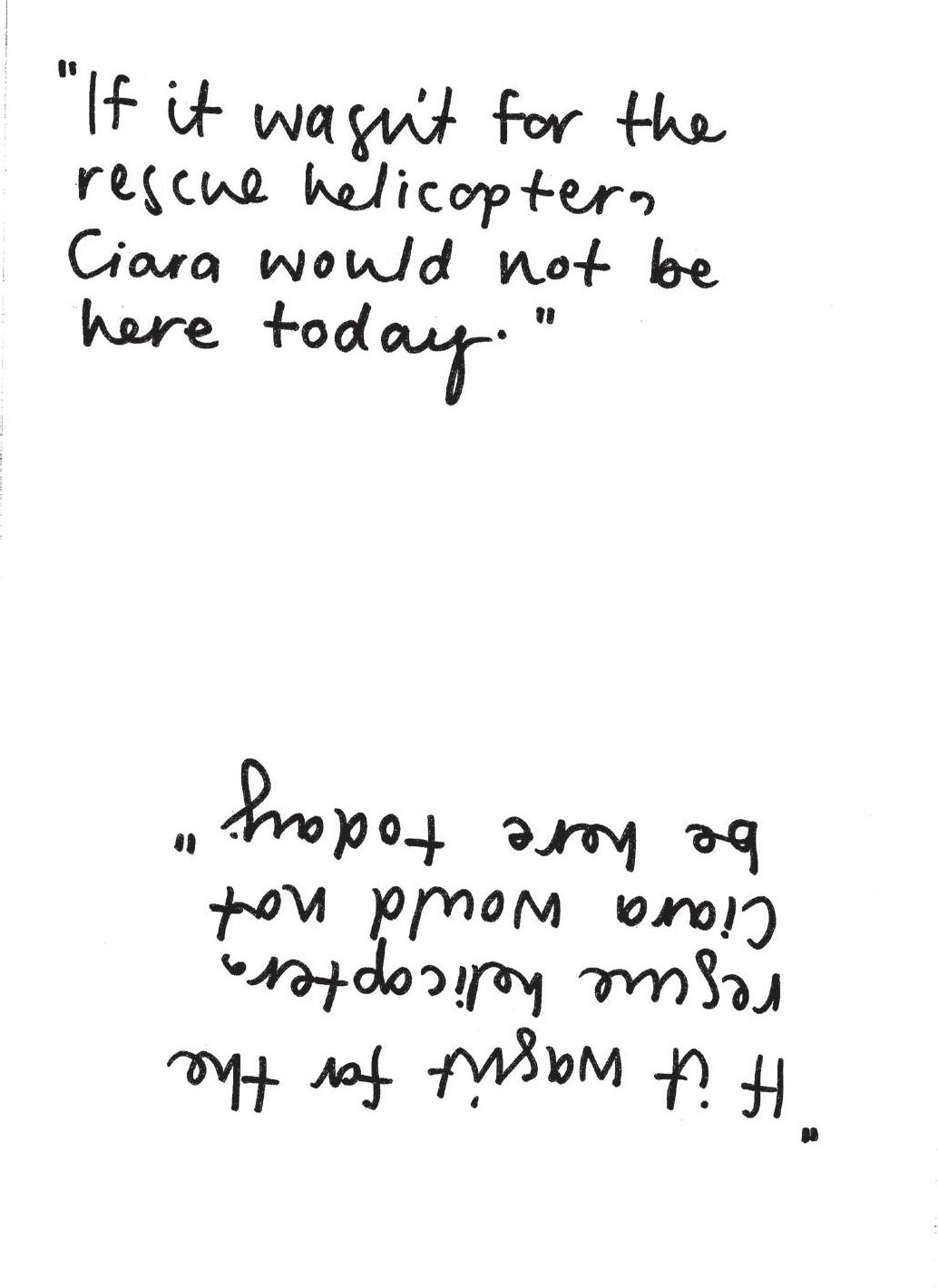 by Ann van Engelen
by Ann van Engelen
We heard how New Zealand Society of Authors First Book Award 2022 finalist Chanelle Moriah initially wrote her book titled I Am Autistic for herself after being diagnosed with autism.

New Zealanders were urged to give generously to the annual Chopper Appeal following the 2021 record-breaking figures with more than 9,500 rescue chopper missions flown.

“I grew up in South Africa, and my family moved to New Zealand in 2008 when I was nine years old,” says Chanelle.
“I was diagnosed with autism at the age of 21 and had difficulty finding resources to help me, so began writing my book for myself. I ended up publishing it because other
people realised it would be a good resource, not only for autistic people but for others who need to understand autistic people. I Am Autistic, covers around 80 different topics of how autism presents, such as object permanence. It is available from all good bookstores or online at mightyape.co.nz.”
rescue helicopter pilots and crew across the country are tasked with many life-saving missions every day
The missions included 986 missions in the Waikato-King Country region and 1,239 in the Auckland and Coromandel regions. Waikato Westpac Rescue Helicopter group manager Vanessa Richmond said the public’s generosity helped the trust keep improving the capabilities of its aircraft and crew.
“It is great to see people out exploring our own beautiful country at every opportunity. The crew love what they do, and they love helping their community using their incredible skills to save lives. There are 15 rescue helicopter trusts nationwide. People wishing to make a donation or find out more information can visit chopperappeal.co.nz.”
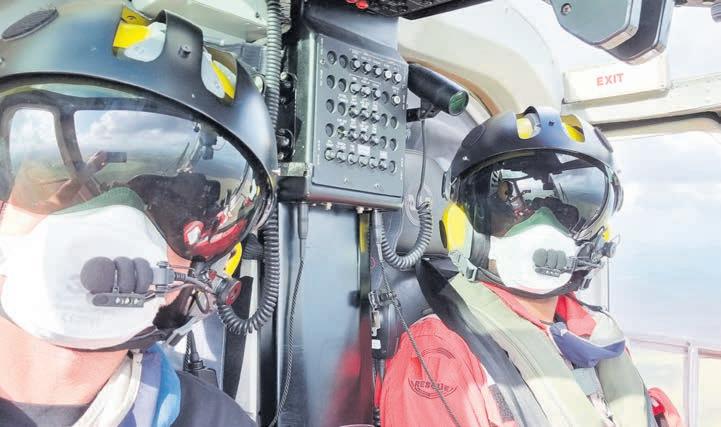

Captain John Fane Charles Hamilton is the namesake for Waikato’s main city. He was born on September 28 1820, to John and Charlotte Hamilton in Cambridgeshire, England.
He followed in the footsteps of his ancestors from both sides of his family, many of whom held naval and military rankings. From his mother’s line were the likes of senior naval officer Rear-Admiral
Francis Fane and John’s father was a British army colonel.
John began his career in 1835. Twenty years into his career, he married Laura Parry, who bore him two sons and one daughter.

He climbed the ranks obtaining titles such as lieutenant commander and eventually captain of HMS Esk, built in 1854. The Royal Navy seaman served in the First Opium war, Crimean War and the New Zealand Wars.
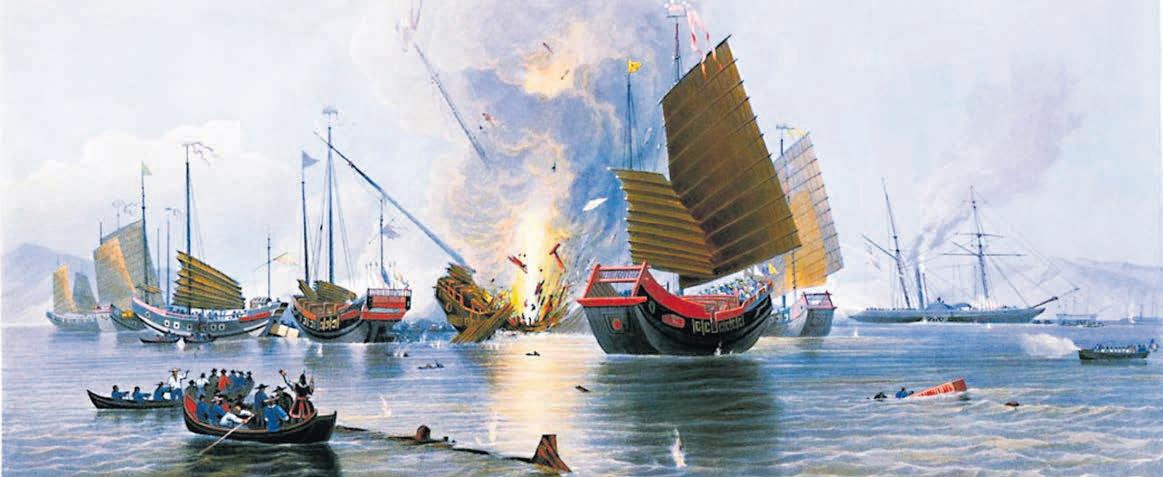
HMS Esk was a highflyer-class corvette armed with 21 guns. John commanded
her from May 1863 until his death in April 1864.
His final fight at the Battle of Gate Pā in Tauranga resulted in the death of himself and his cousin Robert Thomas Francis Hamilton. John died from a shot to the head, leading his men into a fight, and was surrounded by gunfire.
In the same year as John’s death, the Waikato War had ceased. His name was immortalised and the formerly named Kirikiriroa was named Hamilton in his honour. He is now viewed, by some, as a controversial figure in history.

A statue of him was placed in 2013 in Hamilton’s Civic Square, gifted by the Gallagher Group.

It was removed upon request to the council from Waikato-Tainui in 2020. His name remains as a city and as a street name in Tauranga.






The city of Hamilton has grown from a settlement named after a naval captain to one of the region’s main hubs. It is home to various establishments and landmarks, such as Waikato University and Hamilton Gardens, among other significant sites.
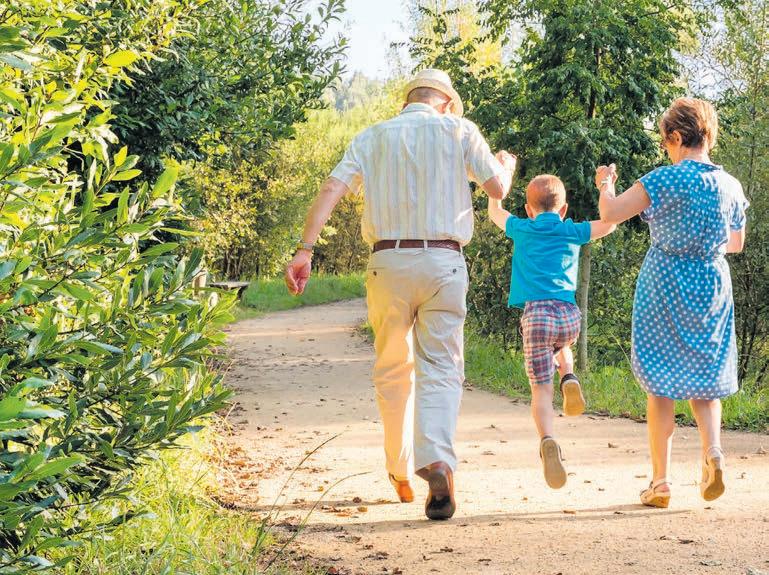
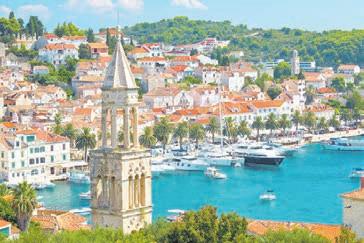
about the moniker of a location?









 by Ann van Engelen
by Ann van Engelen
“Phil and I rear 700 mostly Friesian calves and a few Hereford,” said Deanne. “In 2001, my 18-year-old sister Leisha died in a car accident. When we lost Leisha, our cousin painted a beautiful sunflower on top of her casket. From then on, sunflowers became Leisha’s flower.


“Last summer, we were planting maize in the paddock and thought it would be nice to grow sunflowers to welcome mum and dad when
they came for Christmas. The seeds, however, got stuck in the contractor’s spreader and were scattered amongst the maize. It wasn’t as spectacular as we hoped for mum and dad’s arrival. We picked the blooms and placed them in a roadside stall, and they flew out the gate. We planted a big paddock this season to really bring smiles to mum and dad’s faces, and something that started for mum, dad and Leisha gave others joy.”
“We relocated to the Hamilton area around 20 years ago so he could follow his dream of building,” says Angela. “I discovered dahlias growing after purchasing a couple of plants from Palmers Garden Centre. I found there are more types of tubers than I realised and now have a collection of more than 100.
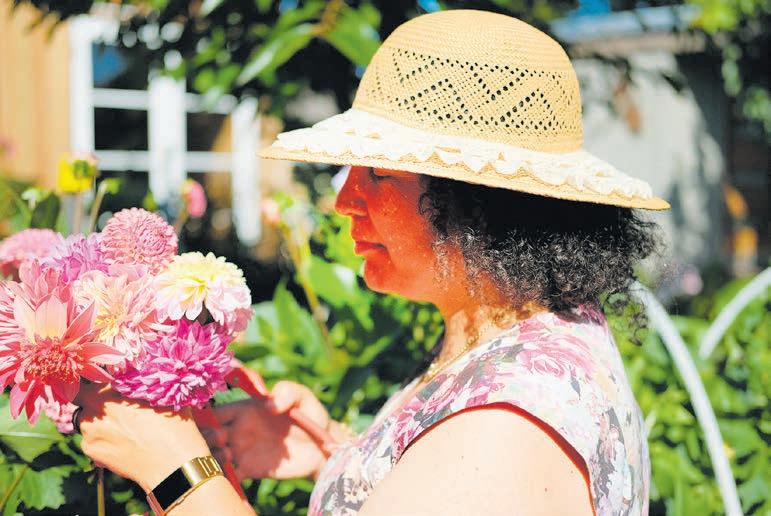
“I had to research how to look after them, and they are flowering well. I think
my raised garden has a lot to do with my success as they are free draining. We also grow hydrangeas and Japanese maple trees.
“I love things with colour so we can look out at them from our deck. Hydrangeas have many colour choices and are easy to grow. Most people think they are old-fashioned, but they actually are beautiful.”
13
In May 1874, Morrin purchased two further blocks, Motumaoho No 1 and No 2, and expanded his land holdings to more than 12,000 hectares. From those foundations, Morrinsville, with a current population of more than 6,000 residents, was established.

With a need for workers to run the vast Lockerbie Estate, Morrin established a village settlement with housing, a hotel and a general store, plus a blacksmith shop. By 1879, Morrin had sold half of the estate to John Studholme.
A visiting correspondent at the time noted the settlement servicing the vast agricultural estate was at the junction of four roads, with more than 20 acres (8ha) laid out in half-acre sections.

‘Here is a good school building, with an average attendance of 20 children.




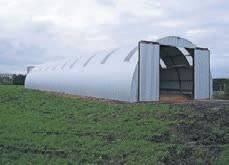

The blacksmith’s shop is a permanent building, and I heard the sound of the anvil as I passed by. A post office is another important establishment of the village, and from miles away settlers come here for their mail. A general store likewise occupies a position in the central street. But the largest and most prominent erection is the hotel, called the Nottingham Castle, and in
The farm estate covered around 22,000 acres (8,903ha) at the time. The development of the site included the drainage of peat swamps for conversion into pasture to support several thousand head of cattle and sheep. Clydesdale horses provided the motive power for
pulling the farm machinery required to do the heavy work.
Morrin, however, would later lose the entire estate to the BNZ bank. In later years he became a founding father of the New Zealand thoroughbred breeding industry, pedigree cattle importer and shareholder in many companies. Morrin later returned to Canada, passing away in 1915 at 77.
Julia Jones told us about writing a children’s farm animal book about the adventures of her miniature pony called Landshark and his farmyard adventures.
Julia wrote the children’s book,
“When I lived in Auckland, working with the SPCA was important to me because I believe it is good to do something that keeps you grounded,” says Julia.
“I am now in Eureka and have just under 10 acres with a few animals. I have a small miniature pony the size of a labrador dog
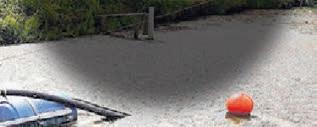

called Landshark. His best friend is a giant thoroughbred named Falcon who came out of Te Akau stud. They stick together, and it is hilarious watching them race around the paddock and playing together. I wanted to share that with children, and a friend suggested I write a book.”
“Dad started dairy farming when I was five years old,” says Kelsey. “I help dad and also work at Waikato Aviation in Hamilton as a Health and Safety Occurrence investigator/auditor and C-Category flight instructor.


“Flying became an interest when I was young. A farm owner at Waihi has his own




plane and airstrip. His daughter went off to flight training school, and I thought that would be nicer than sitting behind a computer every day. Ten years ago, I gained my commercial pilot’s licence.
Flying has taken me places I never thought I would go, and I am now involved in safety investigations and teaching others to fly.”

In 1925, a coin toss was the deciding factor in the founding of the Te Awamutu Co-operative Dairy Company Ltd. The company was a relative late-comer in the establishment of the Waikato co-operative dairying industry that began in the late 19th century.
Scottish-born AJ Sinclair left his position as assistant general manager of the New Zealand Co-operative Dairy Company in 1925. He tossed a coin to decide if he would establish a new factory at Pukekohe or Te Awamutu; the latter was the winning location. Sinclair then approached AG Warburton, owner and founder of the Waipa Post, and together, the pair arranged a meeting with leading local farmers at the Waipa Post building. It led to a further meeting at the Empire Theatre when 45 farmers elected experienced co-operative dairying administrator Charles M Alexander as chairman. In the same meeting, a decision was made to form a new co-operative and establish a factory in Te Awamutu. AJ Sinclair arranged a loan of £8,000 for the new company, and a site for the factory was purchased where a former brewery had been.
Hamilton-based architect FC Daniell designed the complex and construction was started on October 16 1925. The building was completed in six weeks,
with all the plant and machinery installed and ready to commence operations the same year.

The factory plant was designed to have an output capacity of 454 tonnes a year, with further provision for expansion to 907 tonnes. The board of directors employed George Arnold as its factory manager. Arnold had more than 21
years experience working in various dairy factories around New Zealand.
Butter manufacturing operations commenced on November 28 on-site, with 40 suppliers providing the milk for the factory. At the time of its official opening, then Te Awamutu mayor LG Armstrong congratulated the company directors for employing ‘the finest butter

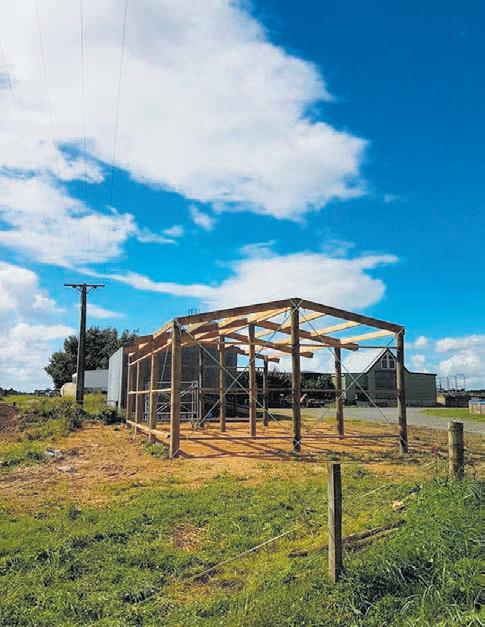
maker in the world’, in reference to George Arnold.
The Te Awamutu Co-operative Dairy Company survived well into the 1970s, celebrating its 50th anniversary in 1975. However, as with many co-operatives, the company became part of the amalgamation process, which later formed dairy giant Fonterra in the early 1990s.

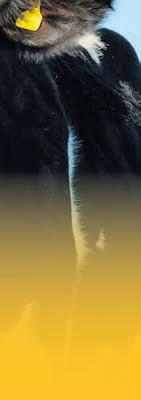 by Ann van Engelen
by Ann van Engelen
Zane Kite, the president of the Waikato Ayrshire Club and owner of Kiteroa Ayrshires, told us how he had been involved in the breed of cattle since he was born, thanks to his dad Wally.


“My wife Marie and I are the fifth generation to be on our family farm,” says Zane.





“I am the manager of Reon and Wendy Verry’s 560ha farms, Puketitiri and Waitete,” said Rameka. “I grew up helping dad on his farm, and that turned into a passion for farming. I knew this was the lifestyle I wanted when raising my tamariki. My wife Sidney and I have two children, Taimana and Ava. After we
had Ava was when I wanted the farming lifestyle for my whānau.

“I also train a Growing Future Farmers student, and I manage summer students as well. We enjoy the GFF student programme and encouraging young farmers to turn their passion into a career.”
“The original piece of the farm has been in our family for more than 100 years. My dad started with Ayrshire cattle after having crossbred and any other cow his dad could buy. The Ayrshire is a Scottish breed of dairy cattle and are the only cattle I have known on the farm since I was born 52 years ago, and we are 100 per cent pedigree and pure now. They are definitely a minor breed, but those who have them love them.”
“They are definitely a minor breed,those who have them, love them.”

